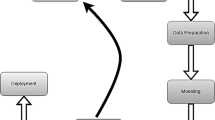Abstract
In this paper, a target detection approach (Faster R-CNN) based on convolutional neural networks is applied to the training and recognition of typical defects in TOFD welding seam images. Before training and recognition, a total of 162 ultrasonic TOFD welding seam images containing five typical defects are collected. The ultrasonic TOFD welding seam image dataset required for neural network model training is established on the basis of the collected images. The neural network model is trained including pre-training on ImageNet, RPN training alone, Faster R-CNN training alone, and joint RPN and Faster R-CNN training. During training, the parameters in the program are adjusted, and, then, the convergence of the neural network models and recognition performance are compared after the same training iterations. It is found that the neural network model has a tendency to converge only when the batch size is 10 and the learning rate is 0.001. Under this parameter configuration condition, the program conducts training with more iterations and is used to identify welding seam defects. The results show that the program is accurate in locating typical defects in the images, and the recognition confidence for all kinds of defects is more than 0.9. Compared with the other parameter configuration conditions after the same training iterations, the program has the highest recognition confidence in identifying all types of defects when the batch size is 10 and the learning rate is 0.001.








Similar content being viewed by others
REFERENCES
Zhen, N., The influence of welding defects on construction quality for steel structure, Steel Construct., 2013, vol. 28, no. 3, pp. 66–71.
Dazhao, C., Research on characterization of weld defect based on ultrasonic TOFD, PhD Dissertation, Harbin, China: Harbin Inst. of Technology, 2007.
Vilar, R., Zapata, J., and Ramón, R., An automatic system of classification of weld defects in radiographic images, NDT&E Int., 2009, vol. 42, no. 5, pp. 467–476. https://doi.org/10.1016/j.ndteint.2009.02.004
Xibin, F., Classification and recognition of weld defects by ultrasonic TOFD based on support vector machine, Nondestr. Test., 2018, vol. 40, no. 6, pp. 52–57.
Murta, R.H.F., de A. Vieira, F., Santos, V.O., and de Moura, E.P., Welding defect classification from simulated ultrasonic signals, J. Nondestr. Eval., 2018, vol. 37, no. 3, p. 40. https://doi.org/10.1007/s10921-018-0496-y
Xingfeng, O., Huanwei, Y., and Jianzhong, P., Time of flight diffraction image optimization process based on synthetic aperture focusing imaging, Nondestr. Test., 2019, vol. 41, no. 3, pp. 29–33.
Pei, Y., Ultrasonic time of flight diffraction (TOFD) detection in spherical tank butt weld and defect analysis, PhD Dissertation, Hangzhou: China Jiliang Univ., 2018.
Duan, J., Luo, L., Gao, X., Peng, J., and Li, J., Hybrid ultrasonic TOFD imaging of weld flaws using wavelet transforms and image registration, J. Nondestr. Eval., 2018, vol. 37, no. 2, p. 23. https://doi.org/10.1007/s10921-018-0476-2
Naichang, L., Xiaoxiang, Y., Xusheng, T., and Zhibin, Z., Defect recognition of TOFD image based on Gabor wavelet, J. Mech. Electr. Eng., 2013, vol. 30, no. 12, pp. 1450–1454.
Cruz, F.C., Filho, E.F.S., Albuquerque, M.C.S., Silva, I.C., Farias, C.T.T., and Gouvêa, L.L., Efficient feature selection for neural network based detection of flaws in steel welded joints using ultrasound testing, Ultrasonics, 2017, vol. 73, pp. 1–8. https://doi.org/10.1016/j.ultras.2016.08.017
Liu, J., Xu, G., Ren, L., Qian, Z., and Ren, L., Defect intelligent identification in resistance spot welding ultrasonic detection based on wavelet packet and neural network, Int. J. Adv. Manuf. Technol., 2017, vol. 90, no. 9, pp. 2581–2588. https://doi.org/10.1007/s00170-016-9588-y
Girshick, R., Donahue, J., Darrell, T., and Malik, J., Region-based convolutional networks for accurate object detection and segmentation, IEEE Trans. Pattern Anal. Mach. Intell., 2016, vol. 38, no. 1, pp. 142–158. https://doi.org/10.1109/TPAMI.2015.2437384
Ren, S., He, K., Girshick, R., and Sun, J., Faster R-CNN: Towards real-time object detection with region proposal networks, IEEE Trans. Pattern Anal. Mach. Intell., 2017, vol. 39, no. 6, pp. 1137–1149. https://doi.org/10.1109/TPAMI.2016.2577031
Simonyan, K. and Zisserman, A., Very deep convolutional networks for large-scale image recognition, 2014. arXiv:1409.1556 [cs.CV]
Author information
Authors and Affiliations
Corresponding author
Ethics declarations
The authors declare that they have no conflicts of interest.
About this article
Cite this article
Qin Liu, Wang, Y., Ye, B. et al. Recognition Confidence of Welding Seam Defects in TOFD Images Based on Artificial Intelligence. Aut. Control Comp. Sci. 56, 180–188 (2022). https://doi.org/10.3103/S0146411622020079
Received:
Revised:
Accepted:
Published:
Issue Date:
DOI: https://doi.org/10.3103/S0146411622020079




